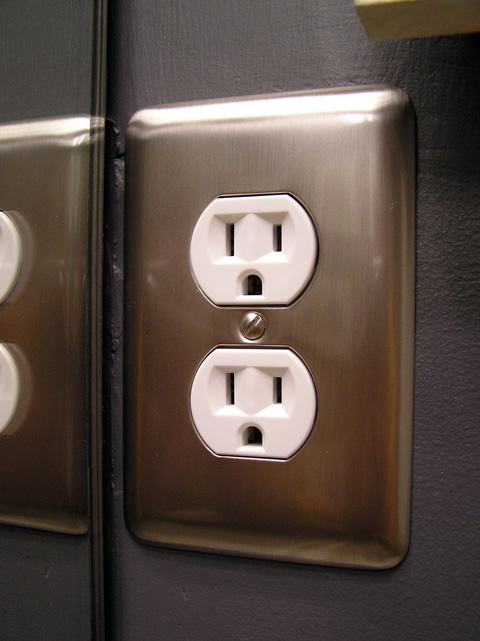Philips Luxeon XF-3535L
This is a super easy version of DIY LED with high performance. Almost no tool required (wire insulation stripper does help). No need to solder nor drill, so much easier than the other DIY LED. Efficiency is pretty high (> 140 lumen/W).
Parts:
Step-by-step assembly
The LEDs come as a flexible strip. Mine is 525mm long.
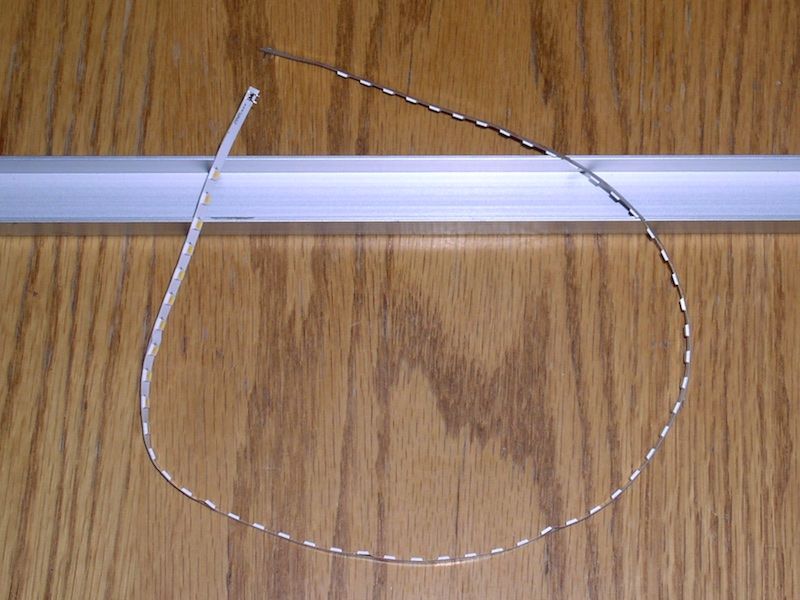
The backside of LED strip has adhesive already, so you peel the backing and attach it to the aluminum C channel (I cut the C channel to 22" length with a hacksaw) like a sticker.
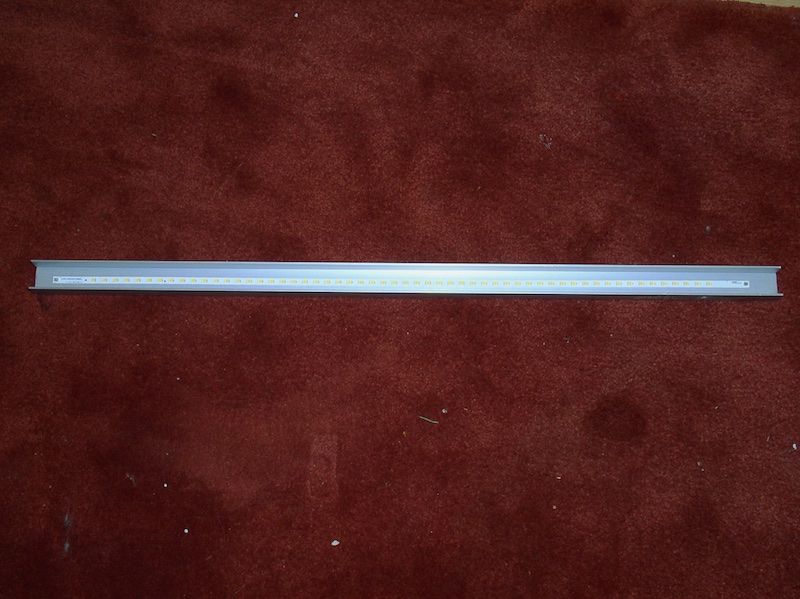
This is the close-up of the diodes:
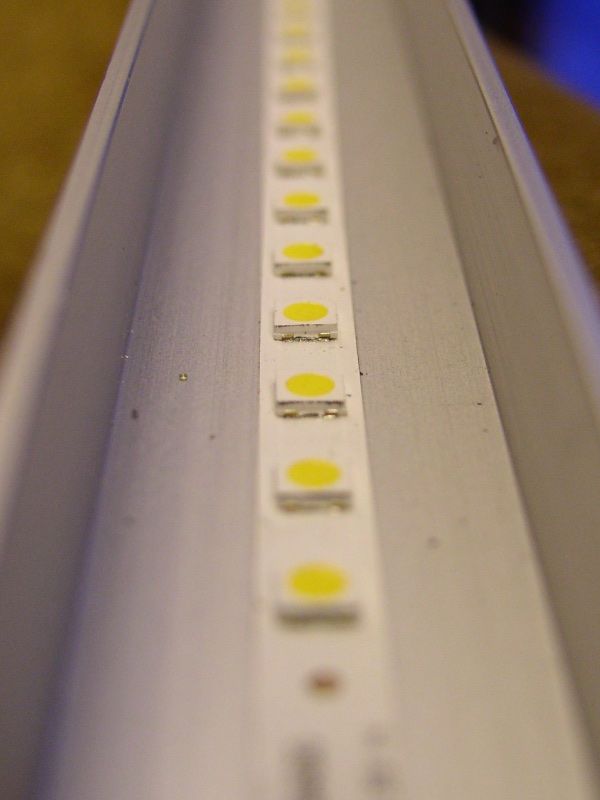
Each end of the LED strip has a connector. One is for + and the other is - (labeled). This connector (AVX 9176-400) is pretty simple to use. If you use 24 AWG (gauge) wires (either solid or stranded wire), all you have to do is push the wire in. You don't have to strip the insulation neither.
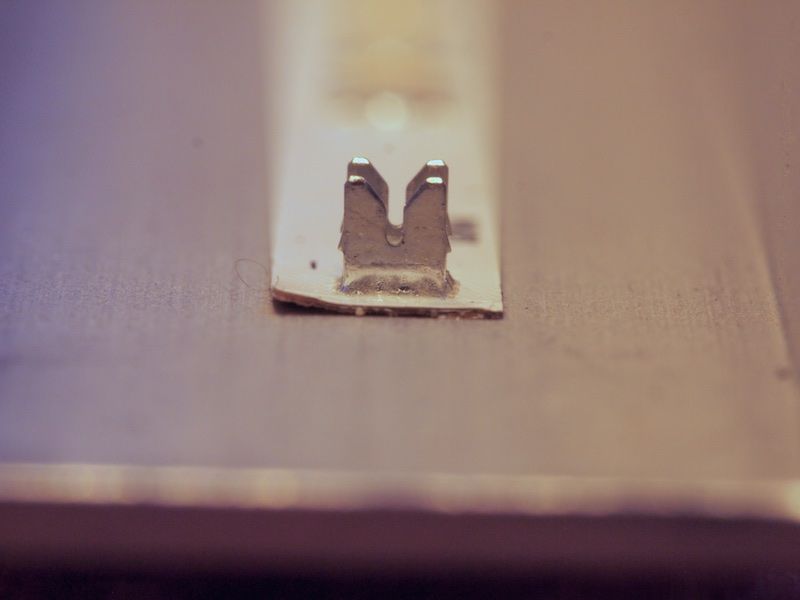
After I pushed in the wire, I used Kapton tape to cover it. It's unlikely to short it, but I happen to have Kapton tape.
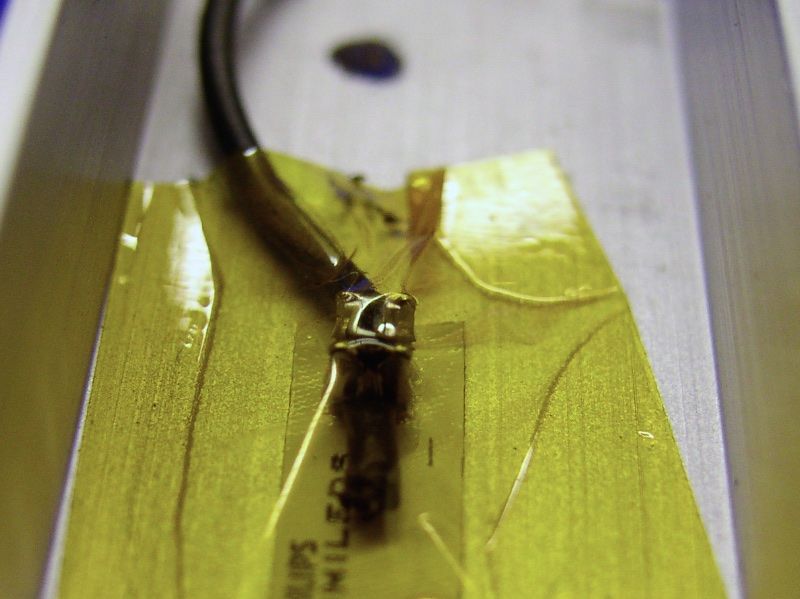
You connect the + connector of LED to + (red) wire of the driver, and - connector to - (usually white or black) wire of the driver. I used this cheap driver (LEF-30W). Note that the sticker is reversed. So the DC output is actually on the left side with red and white wires (even though the label says that the DC out is right side). These are connected to the LED connectors. The wires of the driver are short, so you need to add a couple feet of 24-gauge wires (with wire-nut or solder).

Then the other side of the driver has brown, blue, and green/yellow (yellow with green stripe) wires, which is AC input. You need to connect an AC plug. The round stick is the Ground (refer to the next photo for the AC outlet). Then there are two flat blades; the bigger one is Neutral and the smaller one is Hot (Live). So you want to connect:
Green/Tellow = ground (round stick)
Brown = Live/Hot (smaller flat blade)
Blue = Neutral (bigger flat blade)
That's all you have to do. Here is the assembled and finished LED. I use soldering, but you can use wire-nuts to connect wires.
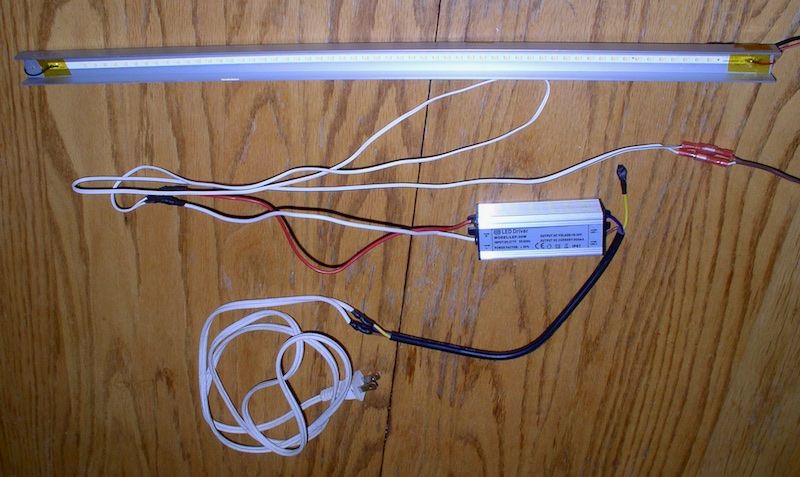
A test run. It doesn't look bright in the photo, but it is pretty bright, so you might want to wear sunglasses.
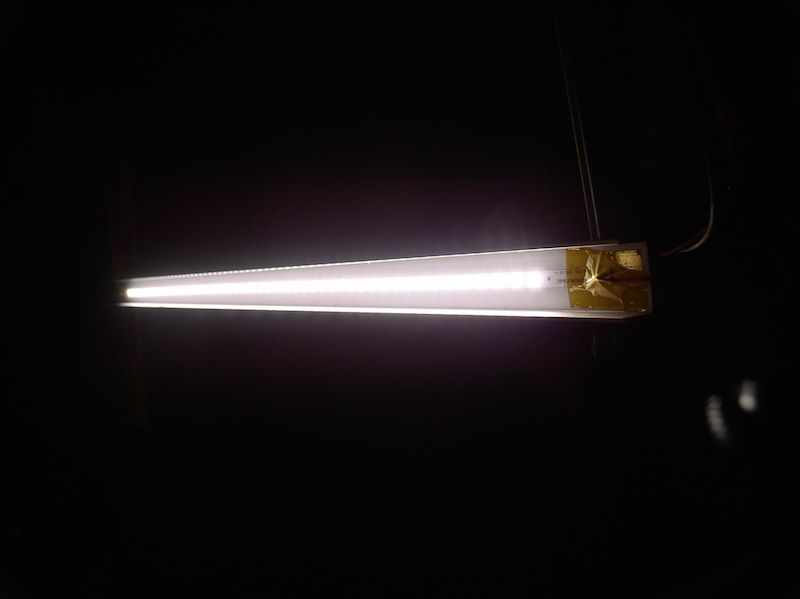
The next photo is showing the beam angle. From 1' distance, it provides about 2' wide homogeneous light. The C-channel looks like a decent reflector. The Cheerio box is not an ordinary Cheerio box. It is modified, and it is actually a DIY spectrophotometer (based on the one we talked earlier in the thread).
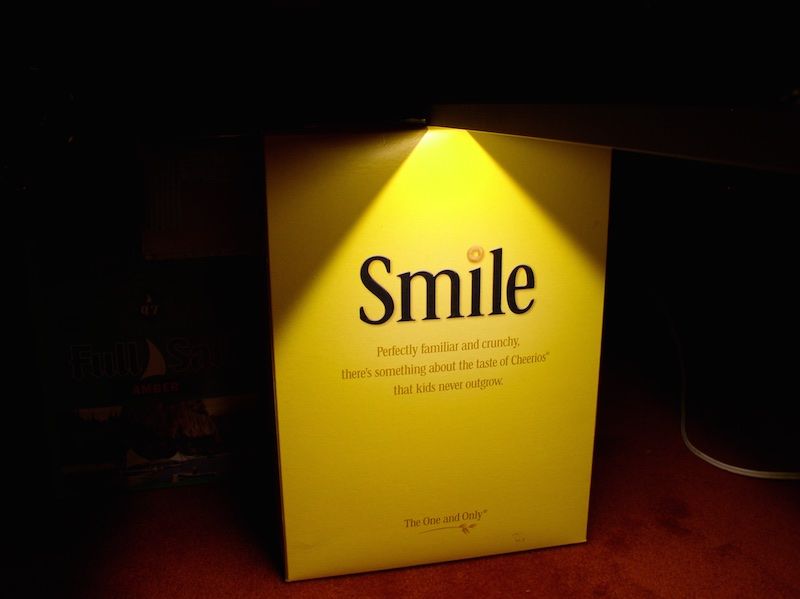
The aluminum C-channel, which is acting as a heatsink, does become quite warm, but it is not hot. A better heatsink would improve the efficiency, but the cost will go up quite a bit (LED is more efficient, when it is kept cooler).
Measurement
Driver:
AC input: 22.7W
Vf: 21.38V
DC current: 906mA
Driver efficiency: 85.3% (a bit low-end)
Light measurement at 1' away from the LED in the middle:
PPFD: 110 micromoles/m^2/s
footcandles with LX1330B: 655fc
footcandles with Gossen Ultra Pro: 420fc (the response curve of this meter is quite different, but I'm including it for the comparison with the measurements of my older posts).
The LED is about 2' long. Here is the values of 1x 24W 2' T5HO (actually consumes about 18.15W per bulb in 4 bulb fixture).
AgroBrite 6400K 24W (brand new)
PPFD: 58 micromoles/m^2/s
AgroBrite 6400K 24W (2 years of use)
PPFD: 33 micromoles/m^2/s
Odyssea Plant 24W (new, purplish "plant" light)
PPFD: 81 micromoles/m^2/s
Odyssea Plant 24W (after 3-5 months)
PPFD: 63 micromoles/m^2/s
With 4x bulb fixture with 4 bulbs in it (bulbs are not brand-new), you get
PPFD: 160 micromoles/m^2/s
So 2x XF-3535L (45W) can outperforms (about >30% more light than) 4x 24W T5HO (consumes 72.6W). The cost of this DIY LED is similar or cheaper than 4x 2' T5HO.
Comments:
There are several versions of XF-3535L. I chose 4000K version. This can do 147 lumen/W if you are driving it at 800mA. I couldn't find a cheap 800mA driver, so I'm slightly driving it harder (900mA). This means the efficiency (i.e. the amount of energy converted to light instead of heat) is a bit lower than 147lumen/W. With any LEDs, if you drive harder, the efficiency goes down. Warmer ones like 3000K may have slightly better light suitable for plants because it has more red light. The lumen/W goes down if you use warmer light, but lumen isn't a good measure for plants. From several measurements I have done with LED (with PPFD of PAR, not irrelevant fc or lux), the output relevant for plants (PAR) doesn't go down with warmer light. So I think using 4000K or something lower than that is optimum. Also XF-3535L comes in several CRI. Stick with the lowest CRI for the given corrected color temp (80 CRI instead of 85 in case of 4000K). Higher CRI ones have lower output for plants. There is also 4' version (and 900mA driver works well), so this would be a good candidate to replace 54W T5HO.
Note that the performance of this LED is impressively high. But the price is relatively high compared to COB LEDs like Cree CXA3070 or Bridgelux Vero series (I recently assembled Vero 29, and I'm very impressed by it, I'll try to post more about it when I get some time). DIY COB-LED is pretty easy, but it is slightly more time-consuming than this strip light (e.g. drilling holes and tapping). Other high performing COB LEDs exist (e.g. Citizen, Samsung), but I can't get a few samples. I also heard that improved LEDs are coming out pretty soon. It is difficult to compare the performance between COB and the linear XF-3535L, but I'm guessing that they are pretty similar to each other. So if you are for ultimate cost-performance ratio, go with COB. So year of 2015 will be exciting for us artificial light growers!
Note that there are lots of other "strip-light"-style LEDs. Most others are not worth using for plants. The efficiency is really low (for most of them).











